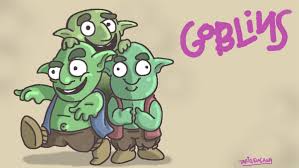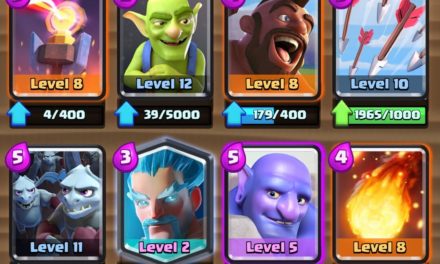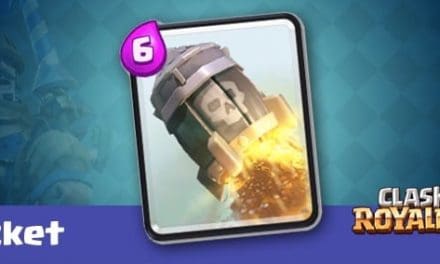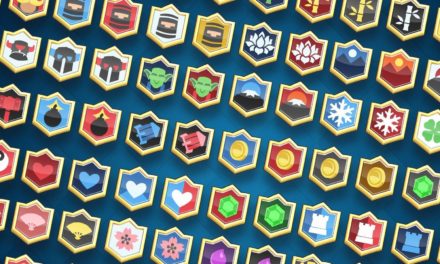 Background Information- If you are looking at this guide right now, you are probably a new player in clash royale. This means that you should first learn the basic types of the cards. This guide will show you different types of troops such as tanks and heavy hitters, or troops that have a high damage per second. The next section will talk about different types of spell cards in the game. Spells range from support, direct damage, and offensive. The final card section talks about different types of buildings. Buildings include defensive towers like the bomb tower or inferno tower, spawner buildings like the goblin hut or the barbarian hut, and producer structures like the elixir collector. We will end this guide of three extremely common mistakes beginners make so you will not look like a fool. By the end of this guide, I hope you will learn a little more about Clash Royale, become a better player, and make fewer mistakes.
Background Information- If you are looking at this guide right now, you are probably a new player in clash royale. This means that you should first learn the basic types of the cards. This guide will show you different types of troops such as tanks and heavy hitters, or troops that have a high damage per second. The next section will talk about different types of spell cards in the game. Spells range from support, direct damage, and offensive. The final card section talks about different types of buildings. Buildings include defensive towers like the bomb tower or inferno tower, spawner buildings like the goblin hut or the barbarian hut, and producer structures like the elixir collector. We will end this guide of three extremely common mistakes beginners make so you will not look like a fool. By the end of this guide, I hope you will learn a little more about Clash Royale, become a better player, and make fewer mistakes.
What is a tank and what are some examples of them?
 A tank is basically any troop that has high health points. That troop is called a tank because in real life, tanks are thought to be strong, resistant, and durable. Unlike real life tanks though, in game tanks, or high health troops, rarely do a lot of damage. This is because the main job of a tank is to soak up the damage, not hand it out. These troops usually have over 1000 health points for this particular game . In this game, your first tank will be the giant. It is automatically unlocked during the training camp. Other tanks include the Golem, the Pekka, the royal Giant, the hog rider, the Lava Hound, and the Giant Skeleton. The pekka is a special card at it has high hit points and health points but is made balance by its slow attack speed. Additionally, there are mini tanks in the game. Mini tanks are basically cheaper in elixir but suffer from a health point decrease. These types of troops still have moderate to high health points when compared to the amount of elixir they cost. Some mini tanks include the knight, the baby dragon, the Valkyrie, the balloon, and the guards. These can get your troops to your enemies tower but do not expect them to last much longer than that.
A tank is basically any troop that has high health points. That troop is called a tank because in real life, tanks are thought to be strong, resistant, and durable. Unlike real life tanks though, in game tanks, or high health troops, rarely do a lot of damage. This is because the main job of a tank is to soak up the damage, not hand it out. These troops usually have over 1000 health points for this particular game . In this game, your first tank will be the giant. It is automatically unlocked during the training camp. Other tanks include the Golem, the Pekka, the royal Giant, the hog rider, the Lava Hound, and the Giant Skeleton. The pekka is a special card at it has high hit points and health points but is made balance by its slow attack speed. Additionally, there are mini tanks in the game. Mini tanks are basically cheaper in elixir but suffer from a health point decrease. These types of troops still have moderate to high health points when compared to the amount of elixir they cost. Some mini tanks include the knight, the baby dragon, the Valkyrie, the balloon, and the guards. These can get your troops to your enemies tower but do not expect them to last much longer than that.
What is a dps (damage per second) troop and what type of damage troops are there?
 A damage per second troop is a unit that can unleash huge amounts of damage in a short amount of time. Imagine them being the real life equivalence of a gun. Just like in clash royale, there are many types. Some of the damage per second troops are like a sniper, where they do a huge amount of damage at once but have a slow fire rate. These troops are hard hitters and are best against a one versus one situation. They will get over whelmed by small troops and die quickly. These hard hitting troops include the prince, the pekka, the mini pekka, the balloon. The next group of troops is sort of like a group of pistols. These troops are usually repetitively weak but come in swarms. If you have enough of these troops you can over whelm your opponent and win the game. However, these troops are weak like a pistol and will die to almost anything that has splash damage. These splash damage troops will be later characterized as shotguns. Some examples of these pistols are the goblins, the spear goblins, the minions, the minion horde, the skeletons, the skeleton army, the barbarians, and the fire spirits. The next type of damage per second troop is the shotguns. The shotgun troops do splash damage, similar to how a shotgun sprays its bullets. These troops work very well against the smaller swarm units called the pistols in this guide. They are usually very bad against tanks or high health point troops because their damage is usually reduced. Their damage is usually reduced because they can usually have a multiplier on their damage. This means that if two troops are right next to one, and a splash damage troop attacks one of them, the other troop will also get hit. This causes the splash damage troop to have its damage multiples by two because it is impacting twice the amount of targets. If it shoots a group of three, the splash damage dealer would have a theoretical multiplier of three for its damage./ Take not however, if the splash damage troop does 200 damage and it targets a troop in a group of three, it does not dish out 600 damage onto each troop. It gives 200 damage to each troop causing for a total of 600 damage to be given. Splash damage troops, or shotgun troops, include the Valkyrie, the bomber, the wizard, the witch, the baby dragon, the princess, the ice wizard, and the sparky.
A damage per second troop is a unit that can unleash huge amounts of damage in a short amount of time. Imagine them being the real life equivalence of a gun. Just like in clash royale, there are many types. Some of the damage per second troops are like a sniper, where they do a huge amount of damage at once but have a slow fire rate. These troops are hard hitters and are best against a one versus one situation. They will get over whelmed by small troops and die quickly. These hard hitting troops include the prince, the pekka, the mini pekka, the balloon. The next group of troops is sort of like a group of pistols. These troops are usually repetitively weak but come in swarms. If you have enough of these troops you can over whelm your opponent and win the game. However, these troops are weak like a pistol and will die to almost anything that has splash damage. These splash damage troops will be later characterized as shotguns. Some examples of these pistols are the goblins, the spear goblins, the minions, the minion horde, the skeletons, the skeleton army, the barbarians, and the fire spirits. The next type of damage per second troop is the shotguns. The shotgun troops do splash damage, similar to how a shotgun sprays its bullets. These troops work very well against the smaller swarm units called the pistols in this guide. They are usually very bad against tanks or high health point troops because their damage is usually reduced. Their damage is usually reduced because they can usually have a multiplier on their damage. This means that if two troops are right next to one, and a splash damage troop attacks one of them, the other troop will also get hit. This causes the splash damage troop to have its damage multiples by two because it is impacting twice the amount of targets. If it shoots a group of three, the splash damage dealer would have a theoretical multiplier of three for its damage./ Take not however, if the splash damage troop does 200 damage and it targets a troop in a group of three, it does not dish out 600 damage onto each troop. It gives 200 damage to each troop causing for a total of 600 damage to be given. Splash damage troops, or shotgun troops, include the Valkyrie, the bomber, the wizard, the witch, the baby dragon, the princess, the ice wizard, and the sparky.
What are spell cards and what types are there?
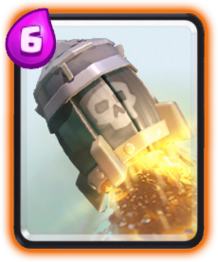 Spell cards are cards that can be placed anywhere on the battle field. They would be like bombs to keep up with the weaponry theme. Depending on what type of spell you use, the spell will kill or injure certain types of troops. The zap spell kills no troops but the zap does take small troop’s health points like the goblins, minions, and the spear goblins so low that your arena tower can finish them off. The zap spell only costs two elixir and can help in many situations. The arrows will kill all small troops like the minions, the goblins, the princess, and the skeletons. The fireball can significantly injure the barbarians, the musketeers, the wizard, and other types of troops of similar level. It can completely kill the bombers and the archers. It can also kill all the small troops like the minions, the goblins, the princess, and the skeletons. Because it can do about 100 more damage than the arrows, it costs one elixir more. The rocket costs 6 elixir and can pretty much one shot any non tank troop. It can take out the barbarians, the minion horde, the goblins, the spear goblins, the the musketeers, and pretty much any troops similar to those troop’s health points. Those types of spells are called direct damage spells because all they do is create damage in a location on the map. The only other direct damage card besides the mentioned spells above is the lightning spell and the poison spell. There are also spells that support troops. These are the freeze spell and the rage spell. The freeze spell stops all your enemy troops in its radius from attacking for four to five seconds, letting your army get quite a lot of free damage. The rage makes your troops attack 35% faster which can also be devastating if used at the right time on the right troops. A weird type of spell is the goblin barrel;. It shots a barrel full of goblins to anywhere on the battle field. It is considered a spell because it can go anywhere on the feild, does not have a troop deploy time, and cannot be instantly countered.
Spell cards are cards that can be placed anywhere on the battle field. They would be like bombs to keep up with the weaponry theme. Depending on what type of spell you use, the spell will kill or injure certain types of troops. The zap spell kills no troops but the zap does take small troop’s health points like the goblins, minions, and the spear goblins so low that your arena tower can finish them off. The zap spell only costs two elixir and can help in many situations. The arrows will kill all small troops like the minions, the goblins, the princess, and the skeletons. The fireball can significantly injure the barbarians, the musketeers, the wizard, and other types of troops of similar level. It can completely kill the bombers and the archers. It can also kill all the small troops like the minions, the goblins, the princess, and the skeletons. Because it can do about 100 more damage than the arrows, it costs one elixir more. The rocket costs 6 elixir and can pretty much one shot any non tank troop. It can take out the barbarians, the minion horde, the goblins, the spear goblins, the the musketeers, and pretty much any troops similar to those troop’s health points. Those types of spells are called direct damage spells because all they do is create damage in a location on the map. The only other direct damage card besides the mentioned spells above is the lightning spell and the poison spell. There are also spells that support troops. These are the freeze spell and the rage spell. The freeze spell stops all your enemy troops in its radius from attacking for four to five seconds, letting your army get quite a lot of free damage. The rage makes your troops attack 35% faster which can also be devastating if used at the right time on the right troops. A weird type of spell is the goblin barrel;. It shots a barrel full of goblins to anywhere on the battle field. It is considered a spell because it can go anywhere on the feild, does not have a troop deploy time, and cannot be instantly countered.
What are building cards and what are the different types of building troops?
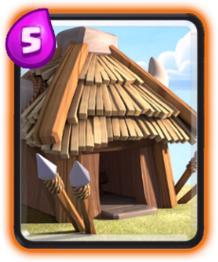 Building cards are structures you can only place on your side of the battle field and it will give you some sort of elixir advantage. The structure types include defensive troop spawners, and producers. The first type of buildings, the defensive towers, provide you an elixir collector by making it a passive card. That means if you are at ten elixir, or max elixir, you can place a defensive tower and still gain more elixir. You do not have to wait for the enemy troops to start your counter. This will let you be able to defend with more elixir because you spend it throughout a longer time than your attacker did. Defensive towers include the inferno tower, the tesla, the cannon, the bomb tower, the mortar, and the xbow. The next type of towers are the spawners. Some strategies use these spawner decks to over whelm their opponent. If you do not have an effective direct damage spell or enough splash damage troops, these can be a problem, especially in over time or double elixir. The product more troops per elixir if you compare it to the regular card so this is how they give you an elixir advantage. Spawner towers include the tombstone, the goblin hut, the barbarian hut, and the furnace. Surprisingly the furnace also acts as a counter to the hut spam deck. The last building is the elixir collector and it does what it says, collect elixir. It costs five elixir to play and produces 7 elixir. This shows that it already gives you a two elixir advantage, but that is not the best part. The best part is that the elixir produced is added on your already produced elixir. This can make it possible to send out even bigger pushes or clutch a defensive stop of a tight victory with one extra elixir. For example, if a prince is coming to you and you only have 4 elixir, the prince will get to the tower before your barbarians can stop[ him. But if you had the elixir collector and it produced one elixir at that time, you now have five elixir and can place the barbarians to stop that prince effectively. This is the end of the basics guide and now onto the main featured deck.
Building cards are structures you can only place on your side of the battle field and it will give you some sort of elixir advantage. The structure types include defensive troop spawners, and producers. The first type of buildings, the defensive towers, provide you an elixir collector by making it a passive card. That means if you are at ten elixir, or max elixir, you can place a defensive tower and still gain more elixir. You do not have to wait for the enemy troops to start your counter. This will let you be able to defend with more elixir because you spend it throughout a longer time than your attacker did. Defensive towers include the inferno tower, the tesla, the cannon, the bomb tower, the mortar, and the xbow. The next type of towers are the spawners. Some strategies use these spawner decks to over whelm their opponent. If you do not have an effective direct damage spell or enough splash damage troops, these can be a problem, especially in over time or double elixir. The product more troops per elixir if you compare it to the regular card so this is how they give you an elixir advantage. Spawner towers include the tombstone, the goblin hut, the barbarian hut, and the furnace. Surprisingly the furnace also acts as a counter to the hut spam deck. The last building is the elixir collector and it does what it says, collect elixir. It costs five elixir to play and produces 7 elixir. This shows that it already gives you a two elixir advantage, but that is not the best part. The best part is that the elixir produced is added on your already produced elixir. This can make it possible to send out even bigger pushes or clutch a defensive stop of a tight victory with one extra elixir. For example, if a prince is coming to you and you only have 4 elixir, the prince will get to the tower before your barbarians can stop[ him. But if you had the elixir collector and it produced one elixir at that time, you now have five elixir and can place the barbarians to stop that prince effectively. This is the end of the basics guide and now onto the main featured deck.
What Not To Do and how to fix those mistakes.
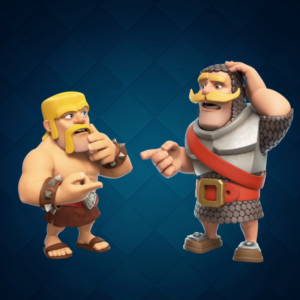 In this section of this guide I will tell you some common mistakes that beginners make that you can avoid. The first one is that beginners often shoot the king’s tower with either the fire ball or the arrow card. This may seem like a good idea at first because it is an easy 200 damage off their health at first, but it actually makes it harder to take down the tower. By doing any damage to the king’s tower, you will “awaken” him and make him angry. This will cause him to start firing cannon balls at your troops when they come into range of his towers. This extra damage that he puts onto your troops really impacts the health they have and make them live a shorter amount of time, making their damage output less. This can be remedied by not shooting either a fire ball or an arrow card at their king’s tower. The same goes for the arena towers or crown towers, do not shoot a fire ball or arrows at it. this is just a waste of elixir. The only time you should ever fireball or arrow your enemy’s tower is when that launched projectile will destroy that tower. Anytime else will be a waste of elixir and a perfectly good spell. The next mistake I see often is that people counter other cards with the wrong types of cards. I constantly see people try countering the bomber with small units like the archer, goblins, or spear goblins. These troops will do very little damage if any damage at all because the bomber is a splash damage unit that can take on hordes of troops. By countering cards with troops that do nothing, you are basically throwing away elixir. Try learning smart elixir trades for each troop. It may be a lot of information at first, but it gets a lot easier the more you practice and play with the game. To counter the bomber, try using a high health, single target troop like the musketeer or the mini pekka. Both of these cards will not take in much damage from the bomber and you killed the bomber without wasting elixir. Better yer, counter the bomber with minion, but you may have not unlocked them yet because they are in a higher arena. I recommend to counter any troop that cannot attack air troops with minions because you will not only kill the enemy troop, but you will basically get free minions. This is a positive elixir trade where you get the elixir advantage on your opponent. The final mistake I see beginners make is that they put their high damage troops in front of their high health point troop. This leads to a lot less damage. The way to fix this problem is to make sure you have your giant or other tank in the very front of your assult, and then spawn in your heavy damage units like your musketeer or mini pekka behind the giant. This will allow your giant to soak up all your opponents damage and let your low health point but high damage troops get to the tower unharmed. If you combine these three tips beginners often make, you should be able to beat a vast majority of the people you face and have a fun time doing it too.
In this section of this guide I will tell you some common mistakes that beginners make that you can avoid. The first one is that beginners often shoot the king’s tower with either the fire ball or the arrow card. This may seem like a good idea at first because it is an easy 200 damage off their health at first, but it actually makes it harder to take down the tower. By doing any damage to the king’s tower, you will “awaken” him and make him angry. This will cause him to start firing cannon balls at your troops when they come into range of his towers. This extra damage that he puts onto your troops really impacts the health they have and make them live a shorter amount of time, making their damage output less. This can be remedied by not shooting either a fire ball or an arrow card at their king’s tower. The same goes for the arena towers or crown towers, do not shoot a fire ball or arrows at it. this is just a waste of elixir. The only time you should ever fireball or arrow your enemy’s tower is when that launched projectile will destroy that tower. Anytime else will be a waste of elixir and a perfectly good spell. The next mistake I see often is that people counter other cards with the wrong types of cards. I constantly see people try countering the bomber with small units like the archer, goblins, or spear goblins. These troops will do very little damage if any damage at all because the bomber is a splash damage unit that can take on hordes of troops. By countering cards with troops that do nothing, you are basically throwing away elixir. Try learning smart elixir trades for each troop. It may be a lot of information at first, but it gets a lot easier the more you practice and play with the game. To counter the bomber, try using a high health, single target troop like the musketeer or the mini pekka. Both of these cards will not take in much damage from the bomber and you killed the bomber without wasting elixir. Better yer, counter the bomber with minion, but you may have not unlocked them yet because they are in a higher arena. I recommend to counter any troop that cannot attack air troops with minions because you will not only kill the enemy troop, but you will basically get free minions. This is a positive elixir trade where you get the elixir advantage on your opponent. The final mistake I see beginners make is that they put their high damage troops in front of their high health point troop. This leads to a lot less damage. The way to fix this problem is to make sure you have your giant or other tank in the very front of your assult, and then spawn in your heavy damage units like your musketeer or mini pekka behind the giant. This will allow your giant to soak up all your opponents damage and let your low health point but high damage troops get to the tower unharmed. If you combine these three tips beginners often make, you should be able to beat a vast majority of the people you face and have a fun time doing it too.

